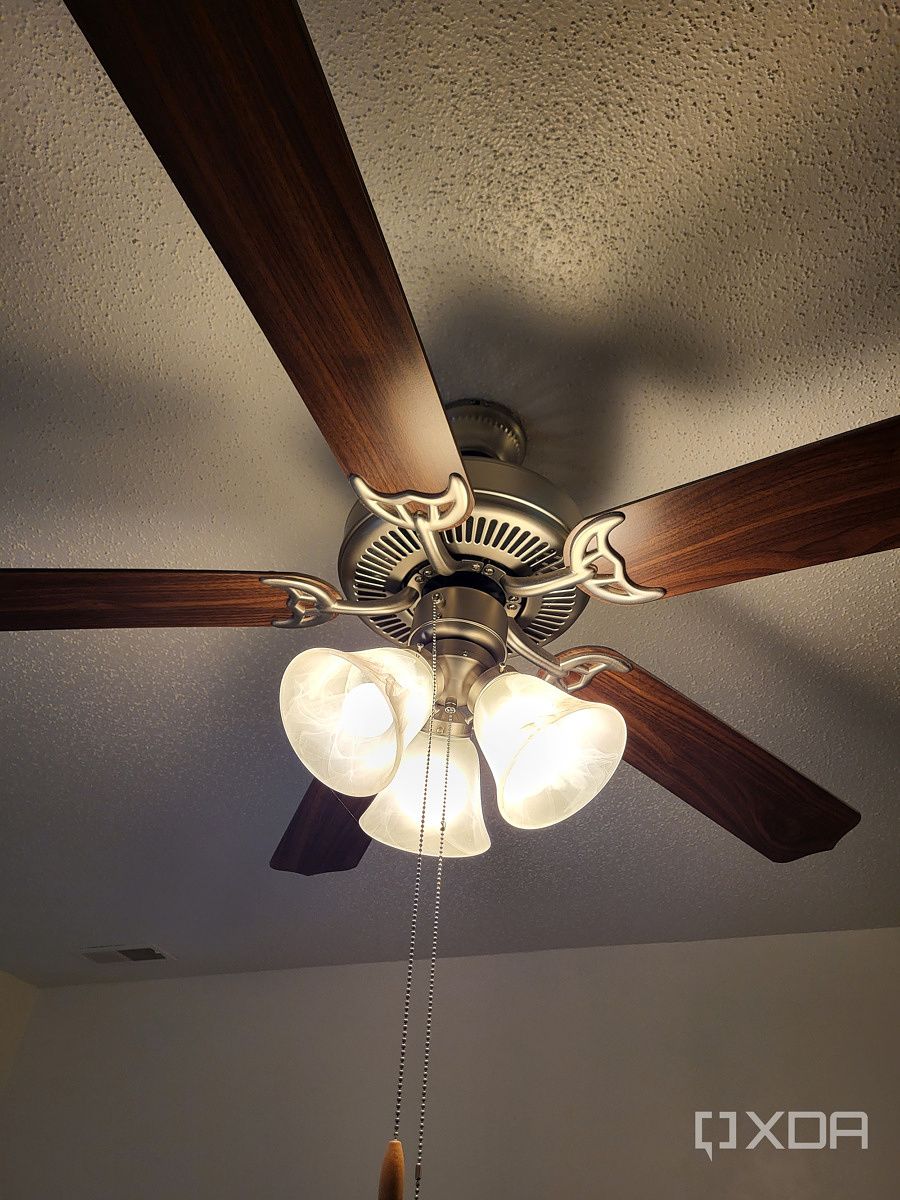Xiaomi launched the Mi 11X and the Mi 11X Pro last year in India to conquer the country’s premium phone market. The Mi 11X, in particular, was an exciting phone because it had the power to dent the long-standing dominance of many devices in the sub-premium flagship segment with its ₹30,000 (~$390) price tag. But it’s been well over a year since the Mi 11X debuted in India. Does it still have what it takes to go against some other value flagships of 2022? Well, that’s exactly what we’re here to find out. In this article, we’ll pit the Xiaomi Mi 11X against Samsung’s Galaxy S21 FE to find out which one is worth buying in 2022.
Navigate this article:
Samsung Galaxy S21 FE vs Xiaomi Mi 11X: Specifications
Before we begin, let’s take a quick look at the specifications to find out what each of these phones brings to the table:
| Specification | Samsung Galaxy S21 FE | Xiaomi Mi 11X |
|---|---|---|
| Build |
|
|
| Dimensions & Weight |
|
|
| Display |
|
|
| SoC |
|
|
| RAM & Storage |
|
|
| Battery & Charging |
|
|
| Security |
|
|
| Rear Camera(s) |
|
|
| Front Camera(s) | 32MP, f/2,2 | 20MP, f/2.45 |
| Port(s) | USB Type-C | USB Type-C |
| Audio |
|
|
| Connectivity |
|
|
| Software | OneUI 4.0 based on Android 12 | MIUI 12 with Android 11 |
Looking at the table, it’s safe to say that both phones look very similar on paper when it comes to the specifications. That being said, there are some noteworthy differences between the two in the real world. Let’s dive a little deep into the comparison to find out if the Xiaomi Mi 11X is worth picking up over the Galaxy S21 FE.
Design & Display
There are a lot of differences between Xiaomi’s M11X and the Galaxy S21 FE, and it all starts with the design. The Mi 11X has a glass design with Gorilla Glass 5 on both sides, giving it a premium look and feel overall. The Galaxy S21 FE, on the other hand, is unapologetic in how plasticky it looks. The Galaxy S21 FE’s back panel, complete with its camera module is made out of polycarbonate. Samsung knows how to mold plastic phones in a way it doesn’t feel cheap but we’d say the Mi 11X is still the way to go if you don’t want to compromise on the build quality.

The overall footprint of the Galaxy S21 FE is a little bit smaller compared to the Mi 11X. Not to mention, it’s also a few grams lighter thanks to its polycarbonate body. What we like more about the Galaxy S21 FE is that you get all the nice-to-have extras like the IP68 rating for dust and water resistance, Qi wireless charging, and more. So if those features are crucial to your day-to-day usage, then you might want to consider buying the Galaxy S21 FE over the Mi 11X. The Samsung Galaxy S21 FE is also available in more color options. You can get it in Graphite, White, Lavender, or Olive colorway while the Mi 11X is available in Black, White, and Silver colors.

Moving over to the front, you get a 6.4-inch FHD+ Dynamic AMOLED 2X display with the Galaxy S21 FE, and a 6.67-inch FHD+ Super AMOLED display with the Mi 11X. Both panels support a maximum resolution of 2400 x 1080 pixels and up to a 120Hz refresh rate. The Galaxy S21 FE’s display either works at 60Hz or 120Hz whereas the Mi 11X supports adaptive refresh rate switching, meaning it can operate at 60Hz, 90Hz, or 120Hz based on the content. Both are AMOLED panels, so you’re bound to get a very similar experience overall when it comes to traits like contrast ratio, deep blacks, color reproduction, and more. They’re both using HDR10+ certified panels, so you can playback HDR content on apps like YouTube and Netflix.

It’s also worth pointing out that the Galaxy S21 FE sports an in-display fingerprint scanner whereas Xiaomi has opted for a side-mounted scanner that’s embedded on the power button. It’s not necessarily a deal-breaker for those who’re considering the Mi 11X. It mostly comes down to personal preference when it comes to the placement of the biometric scanners. Some prefer it on the display, while others may like it on the side as long as it’s easier to reach.
Hardware and Performance
We’re looking at as much as a ₹25,000 price difference between these two phones which also means you make some compromises in the specifications department by choosing the Mi 11X. Xiaomi’s contender in this comparison is powered by Qualcomm’s Snapdragon 870 SoC which is relatively older than the Galaxy S21 FE’s Snapdragon 888 or the Exynos 2100 chips. The Snapdragon 870 SoC is probably not going to win any battle against the Snapdragon 888 or the Exynos 2100, but that’s not to say it’s a bad chipset. You should be able to get through most of your day-to-day workload without a hitch.
The base variants of both phones pack 6GB of RAM with an optional 8GB upgrade, but the Mi 11X tops out at 128GB storage while the Galaxy S21 FE comes with up to 256GB storage. Since you can’t a microSD card to expand the storage on either of these devices, it may be worth looking at the Galaxy S21 FE if you tend to use a lot of apps or take a lot of photos and videos.

As for the battery life, you get a 4,500 mAh battery with both phones (4,520 mAh with the Mi 11X to be specific) which we think should be enough to get you through a day’s worth of use. Your mileage is, of course, bound to vary based on your usage, but a 4,500 mAh battery is pretty much what we get with most phones these days. The Mi 11X, however, supports faster charging. You get support for up to 33W fast-charging with the Mi 11X whereas the Galaxy S21 FE can only do 25W charging. Xiaomi even bundles a 33W fast charging brick inside the box with the Mi 11X. The Galaxy S21 FE doesn’t even come with a charger inside the box, let alone a fast-charging one. Samsung tends to lose the fast-charging battle against most phones and it’s no different in this case against the Mi 11X. That being said, the Galaxy S21 FE supports wireless charging which the Mi 11X doesn’t.
Camera
Both the Galaxy S21 FE and the Xiaomi Mi 11X are also packed with a different set of optics at the back. You get a potent primary sensor with both of these phones that’s capable of taking some really good shots. It’s a 12MP f/1.8 sensor on the Galaxy S21 FE going against the 48MP f/1.79 sensor on the Mi 11X. Both phones can capture some really good-looking photos with the primary sensor, especially during the day when there’s enough light in the scene. As an overall package, however, the Galaxy S21 FE’s advanced camera system seems more practical. Both of them have an ultra-wide sensor as a secondary sensor — a 12MP f/2.2 sensor with 123degree FOV with the Galaxy S21 FE and an 8MP f/2.2 sensor with a 119-degree FOV with the Mi 11X.

Lastly, the Galaxy S21 FE sports an 8MP telephoto lens with support for up to 3X optical zoom. Meanwhile, the Mi 11X sports a 5MP telemacro lens instead of a telephoto sensor. While the macro lens has its advantages, we think the telephoto lens is more practical and comes in handy in more situations than a macro lens. We couldn’t take both phones out for a spin and capture the same set of photos for a side-by-side comparison, but we’re leaving some camera samples captured using both phones below, so be sure to take a look. The Mi 11X sports a 20 MP, f/2.5 selfie camera whereas the Galaxy S21 FE sports a 32 MP, f/2.2 on the front. On the video front, the Galaxy S21 FE can record 4K videos at 30 or 60fps but the Mi 11X tops out at 30fps for 4K videos.
Xiaomi Mi 11X camera samples:





Samsung Galaxy S21 FE camera samples:





Samsung Galaxy S21 FE vs Xiaomi Mi 11X: Which one should you buy?
It must be noted that there’s a price difference of around ₹25,000 (roughly $320) between the two — the Galaxy S21 FE retails for ₹54,999, while the Xiaomi Mi 11X is currently going for ₹29,999 in India. The Mi 11X is a no-brainer for those working with a tight budget for this purchase. Despite being the cheaper and a relatively older phone in this comparison, we think the Mi 11X is still pretty good for everything it brings to the table. It may not have the most powerful internals or the best camera setup out there right now, but it’s still pretty good considering its asking price. We think the Mi 11X is great for those who don’t have any qualms about using a phone with a relatively older chip and “just” 128GB of storage. Yes, the Galaxy S21 FE is more powerful and has a better camera system overall, but the Mi 11X offers a lot of value with things like an all-glass design, a beautiful Super AMOLED, and a 33W fast-charger inside the box.
Outside of the relatively small set of compromises, we think the Mi 11X offers a great experience overall for a significantly cheaper price. It also runs MIUI 13 based on Android 12 and has at least a couple more major OS updates in its belt before giving up. That’s not to say the Galaxy S21 FE is a bad phone, though. It just happens to be the more expensive phone in this comparison which may not be the go-to option for most people on a budget. But if you don’t mind spending as much as ₹25,000 more then Galaxy S21 FE will get you better internals and more advanced optics along with Samsung’s promise of up to four major Android OS updates. You also get additional features like an IP rating and support for wireless charging. It mostly comes down to your personal preference and your purchasing power, but it’s tough to go wrong with either of these phones.
- The Samsung Galaxy S21 FE is arguably the better phone in this comparison as long as you don't mind paying its asking price.
- Xiaomi's Mi 11X comes with a small set of compromises but it offers an excellent value for money.
So which smartphone out of these two are you planning to buy? Let us know by dropping a line in the comments below. If you’re leaning towards the more expensive Galaxy S21 FE, then see if you can find some deals by heading over to our Galaxy S21 FE deals page. You can use those savings to grab yourself one of the best cases or some other accessories for your phone.
The post Samsung Galaxy S21 FE vs Xiaomi Mi 11X: Which value flagship should you buy? appeared first on XDA.
from XDA https://ift.tt/hJTNK1Y
via IFTTT



Aucun commentaire:
Enregistrer un commentaire